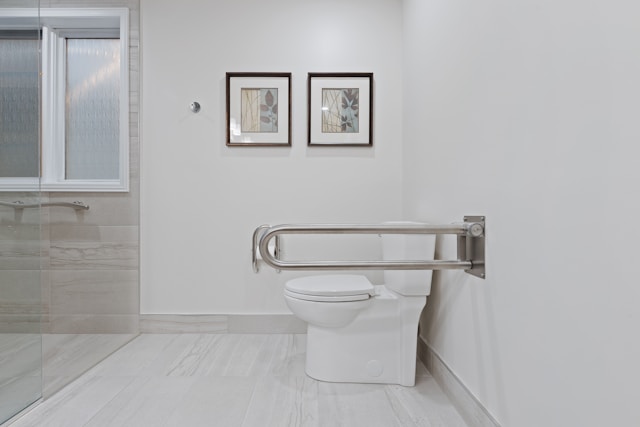Designing a bathroom that is both accessible and safe for people with disabilities is more than just a convenience: it is a necessity. Bathrooms are one of the most dangerous places in a home, especially for people with mobility issues.
Traditional bathroom layouts can present numerous hurdles for many people living in older or smaller homes. But with thoughtful planning, a bathroom can be transformed into a safe, comfortable and independent space.
Core design principles for an accessible bathroom layout
There are three important principles to consider when thinking about the layout of your home bathrooms for the disabled: accessibility, usability and security.
Accessibility
This means making sure you can get in and out of the bathroom easily. Many British homes have narrow doorways that can be difficult to navigate for wheelchair users or those with walkers. You may need to consider widening doorways or removing steps or thresholds to make them more accessible.
Usability
The layout and placement of fixtures are crucial. Everything should be within reach and easy to use, whether someone is sitting, standing or using a mobility aid. A well-designed bathroom is suitable for everyone, regardless of their mobility level.
Safety
Safety is the most important factor. Features such as grab bars, non-slip floors and stable fixtures can significantly reduce the risk of falls and injuries, which are unfortunately common in bathrooms.
Key elements of a bathroom layout for the disabled
Designing an accessible bathroom involves a number of crucial elements that increase both safety and usability. From ensuring there is plenty of space to move around to installing accessible showers and grab bars, every feature plays a role in creating a functional and supportive space.
Plenty of room to maneuver
One of the first things to consider is space. A bathroom needs enough space for someone who uses a wheelchair or walker to move around comfortably. British building regulations suggest minimum 1,500 mm by 1,500 mm of free space, allowing easy turning and access to all fixtures. If your bathroom is short on space, it may require some creative layout changes or even knocking down walls to expand.
Accessible shower or bath
When it comes to baths, wet rooms are a fantastic option. They provide level access for roll-in showers, allowing someone with limited mobility to enter easily, without steps or raised edges to trip over. Alternatively, walk-in baths provide a great solution for those who prefer a bath but can’t handle the usual high sides of a bathtub. Another option is to add shower seats, which provide comfort and stability for those who need to sit while washing.
Height-appropriate fixtures
Everything from the sink to the toilet should be at the right height. Comfort height toilets, which are slightly larger than standard toilets, are easier to use for people with mobility issues. Wall-mounted sinks are another good option, as they provide extra space underneath for wheelchair users. Mirrors should be placed at an angle or at a height that is suitable for both seated and standing users so that everyone can use them comfortably.
Grab rails and handrails
Grab bars are an absolute must in any accessible bathroom. They provide essential support around the toilet, shower and bath. Rails should always be placed where they are most useful to the individual. Whether it’s helping someone transfer from a wheelchair to the toilet or ensuring balance in the shower, grab bars are essential for increasing safety.
Non-slip floors
Bathrooms are notorious for being slippery, especially when water is involved. Installing non-slip floors can significantly reduce the risk of falls. In a wet area, good drainage is also crucial to prevent water from building up and causing a hazard. This type of flooring is also available in a wide range of designs to suit every style.
Special considerations for mobility and sensory limitations
Beyond the basics, there are a few additional details to consider, especially for those with mobility or sensory limitations.
Relief
Bright, even lighting is critical for people with visual impairments. Many older homes in Britain have dim bathroom lighting, making it difficult for someone with low vision to see clearly. Upgrading to brighter, customizable lighting can make a big difference.
Color contrast
Using contrasting colors for different fixtures can help people with limited vision distinguish between elements more easily. For example, a dark toilet seat on a light-colored toilet makes it easier to see and use.
User-friendly technology
Touch-free faucets, easy-to-use shower controls and emergency pull cords are all great additions that make a bathroom more accessible. These are especially useful for people with limited dexterity or strength.
Creating a functional, safe and inclusive bathroom space
Designing an accessible bathroom is all about thinking about the specific needs of the individual. By focusing on accessibility, usability and safety, you can create a bathroom that works for today and the future.




